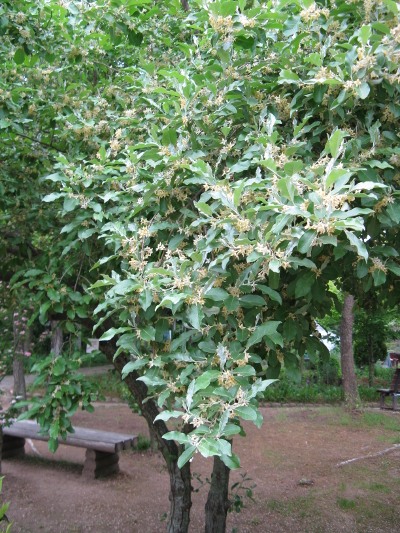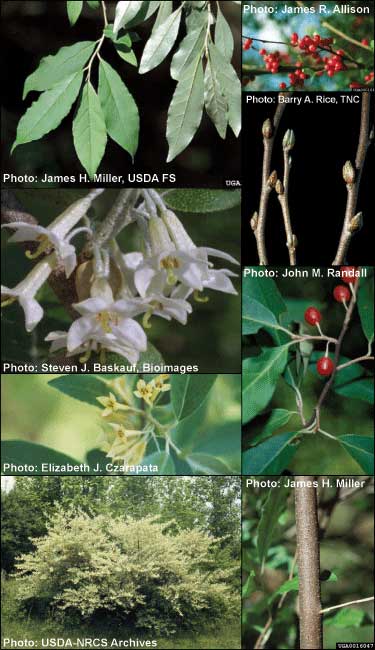autumn olive tree identification
Its form is rounded with dense branches. There are two types of them.
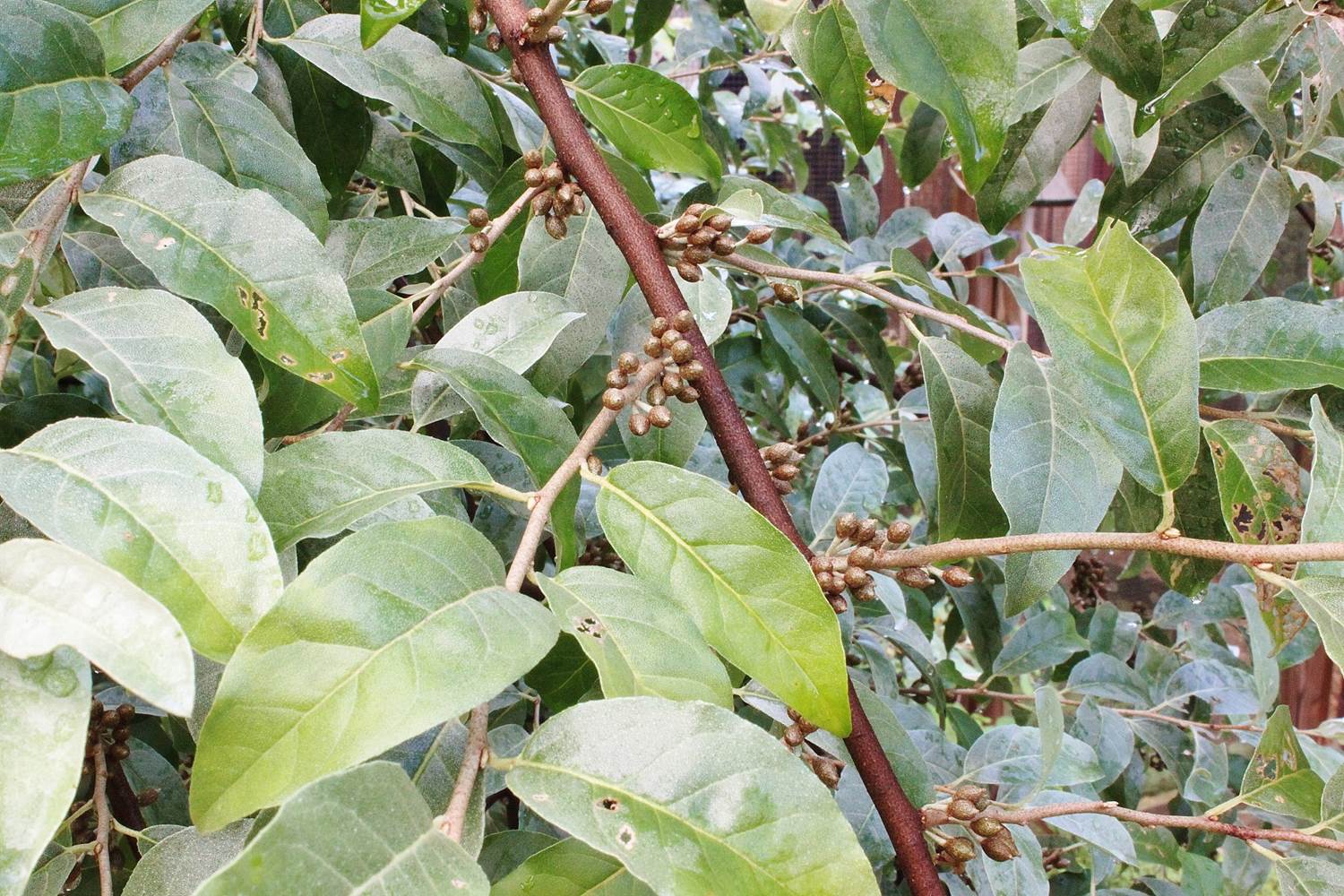
Autumn Olive Foraging For Autumnberries
Autumn olive leaves are dark green on top and silver-gray on the underside lance-shaped or elliptic with entire wavy margins.

. The tree leafs out early shading other native plants and decreasing diversity. Both have round flowers with a tapering tapering blooming stem and an extended base. Site verification Growing olive trees How to grow The spanish first introduced olive trees to the state in the 1700s and according to the florida farm bureau there are now more than 400.
Elaeagnus angustifolia commonly called Russian olive is native to Europe and Asia and is a riparian tree in the Elaeagnaceae family. Autumn olive Elaeagnus umbellata Thunb is a large deciduous shrub capable of forming dense thickets in West Virginia pastures. Autumn Olive Elaeagnus umbellata Thunberg Description Autumn olive is a deciduous shrub or small tree in the Oleaster family.
Gray fibrous bark of autumn olive. It can grow up to 15 feet high. A deciduous shrub with white flowers in spring and bright red berries in fall autumn olive Elaeagnus umbellata originally came from Asia and was widely planted in the US.
Leaves are alternate oval to lanceolate and untoothed. The plant may grow to a height of 20 feet. This shrub is native to Asia and was introduced into the US.
Autumn Olive Tree Fast Facts. The plant may grow to a height of 20 feet. The underside of the dark green leaf is covered with silver-white scales.
Autumn olive is a deciduous shrub or small tree growing up to 6 m 20 ft in height and 9 m 30 ft in width. Grayish green leaves with silvery scales bottom side gives off shimmery look. Both were introduced for landscaping roadbank.
Autumn Olive is a deciduous shrub that can grow quite tall. Fruit to 8 mm silvery to bronze ripening to red. The leaves have a dintinctive silver underside.
The young twigs are silvery with brownish scales giving the twigs a highly textured appearance. How to identify autumn olive. The underside of the dark green leaf is covered with silver-white scales.
Simple alternate small elliptical or oval 13 inches long about 1 inch wide. Autumn olive Elaeagnus Oleaster Japanese silverberry. The autumn olive shrub is easy to identify when it is in flower or once the fruits have matured.
Identification of Autumn Olive. The bark on the main stem is thin and light gray. The tree was native to Asia and brought over to the US around the 1800s.
Cultivated for wildlife habitat and erosion control Fordham et al. Silvery or golden brown with speckles. It was commonly planted for wildlife food and cover.
Autumn Olive Identification. Our nursery stock ranges in ages sizes from 1 year old 26qt pot trees to 4 year old 8 trees. The black-eyed Susan thus or the ruffly pink calla lilies.
From Asia in 1800s planted widely in 1950s for erosion control. Introduced as an ornamental. Tubular 4-petaled flowers of autumn olive.
The twigs and branches are covered with small silvery to rust colored scales and short spur twigs often have a spine at the end. This shrub with scattered thorny branches can grow 3 to 20 feet tall. 2019 Status in Maine.
Sun to part shade. They are bright green above. Autumn Olive Russian Olive Autumn olive branch.
Large shrub or small deciduous tree can grow up to 20 feet tall with gray to silver foliage. Some plants bear 1 woody spines. It has a gray-green hue when seen from a distance.
Leaves are alternate oval to lanceolate and untoothed. Bloom in late spring. Perennial deciduous shrub up to 10-15 tall and wide usually very branched with silvery andor brown scales along twigs.
It was introduced to North America in the 1800s and is native to eastern Asia. Flowers perfect yellow-white fragrant 12 long tubular. Up to 24 cash back Autumn Olive trees are an invasive species in Michigan.
Autumn olive flowers are small fragrant and white. Russian olive is a medium-sized deciduous tree that is drought-resistant. The leaves are white with a star-shaped shape and red berries at their bottom.
Molly OBoyle Fairfax Master Gardener talks all about Autumn Olive Elaeagnus umbellata Thunb why its invasive how to identify and remove it and more. Elaeagnus umbellata autumn olive berry and Elaeagnus multiflora goumi berry are also in this family. For wildlife food and erosion control.
Tube- or bell-shaped fragrant and borne in leaf axils. Autumn olive is a small rounded tree or shrub that can reach 20 feet in height. With age the twigs take on the light gray appearance of the main stem.
AUTUMN OLIVE Elaeagnus umbellata RUSSIAN OLIVE Elaeagnus angustifolia IN BRIEF Closely-related Autumn olive and Russian olive grow as shrubs or small trees. Autumn Olive Flower Identification. Silver-gray on underside and dark green on top.
Adaptable to varied soils and can withstand drought. Woody invasive shrubs that have a silvery cast and conspicuous red berries. Autumn Olive produces an abundance of small red berries that are very easily distributed by birds and other mammals.
A slow-growing deciduous shrub that produces fragrant silvery-white to yellow flowers from February to June and many red berries from August to November. Autumn olive is a large deciduous shrub that grows up to 20 tall and is frequently equal in height and widthIt may or may not have a central trunk. Hardy to USDA Zone 6 Native to Himalaya China and Japan.
Autumn olives leaves are alternate and oval with finely pointed tips. A woody shrub that may reach up to 20 feet in height with yellow to cream colored flowers that appear in the spring and bunches of red berries that appear in the early fall. Autumn Olive Elaeagnus umbellata Thunberg Russian Olive Elaeagnus angustifolia L Description Autumn olive is a deciduous shrub or small tree in the Oleaster family.
Asia Munger 2003 Date of US. Their margins are wavy but do not have teeth. Autumn Olive Elaeagnus umbellata.
1830 Munger 2003 Means of Introduction. Elaeagnus umbellata was widely planted by the Soil Conservation Service and other government. Stems are speckled often with thorns.
Autumn olive Elaeagnus umbellata ELUM is a bushy leafy shrub native to Asia. The olive tree olea europaea is an evergreen native to the mediterranean asia and africa. Autumn olive is similar in appearance to russian olive but russian olive has leaves that are much more.
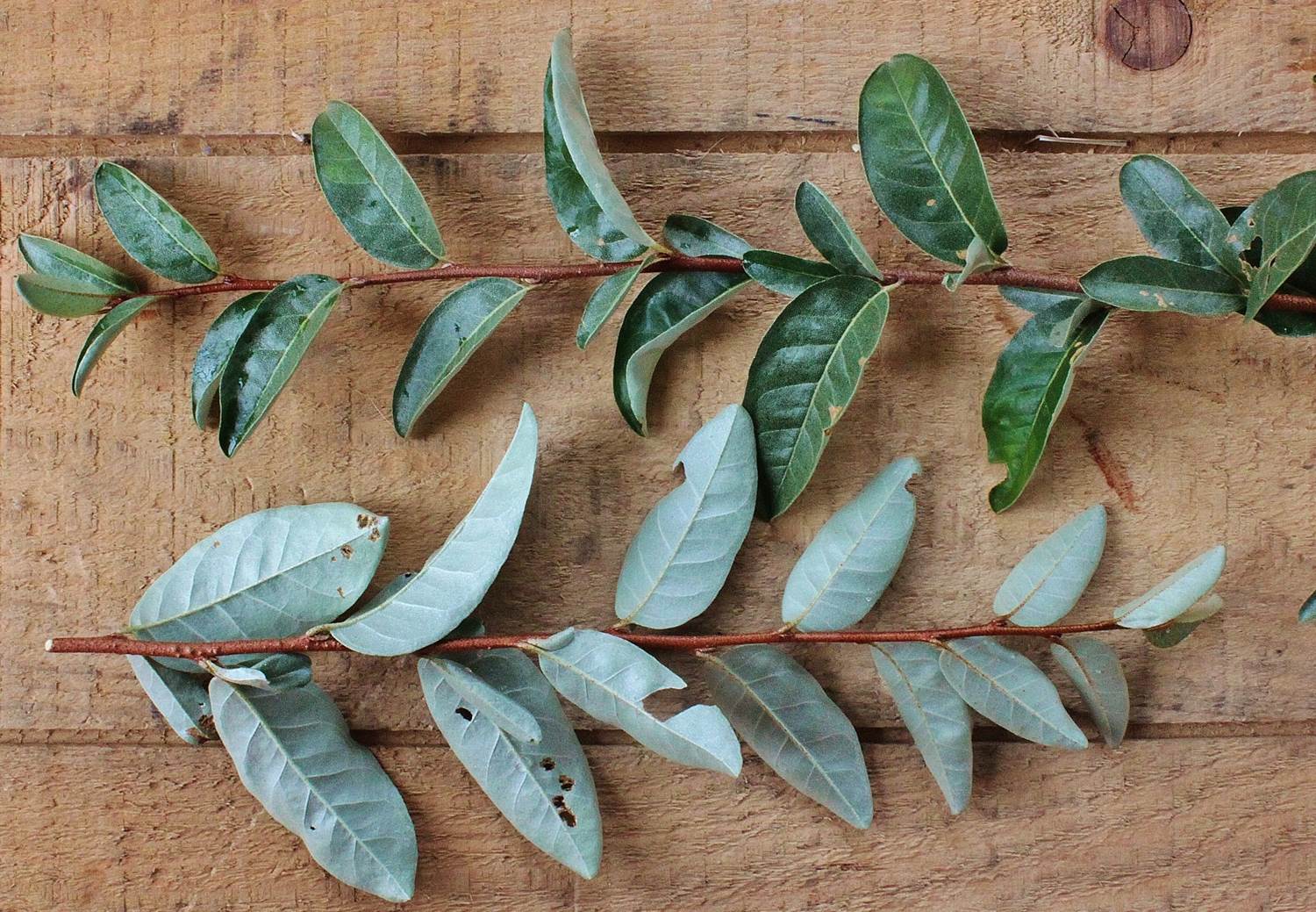
Autumn Olive Foraging For Autumnberries
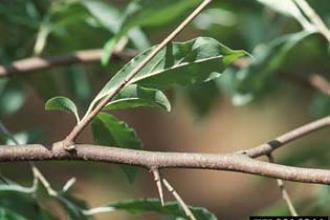
Autumn Olive National Invasive Species Information Center

Autumn Olive Nonnative Invasive Plants Of Southern Forests A Field Guide For Identification And Control

Autumn Olive Invasive Species How To Control It

Autumn Olive Nonnative Invasive Plants Of Southern Forests A Field Guide For Identification And Control

How To Identify And Remove Autumn Olive Youtube

Autumn Olive Japanese Silverberry Mdc Teacher Portal
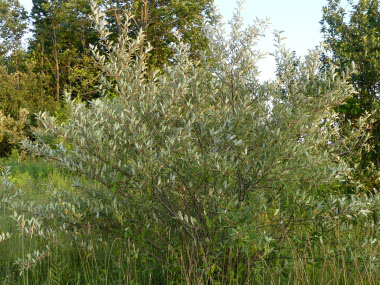
Autumn Olive Identification Leaves Bark Habitat Elaeagnus Umbellata

Foraging For Autumn Olives How To Identify Edible Wild Autumnberries Good Life Revival
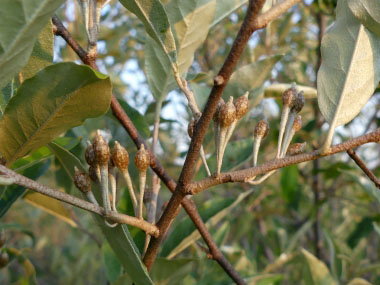
Autumn Olive Identification Leaves Bark Habitat Elaeagnus Umbellata
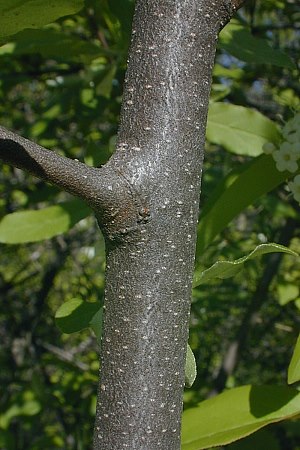
Autumn Olive Elaeagnus Umbellata
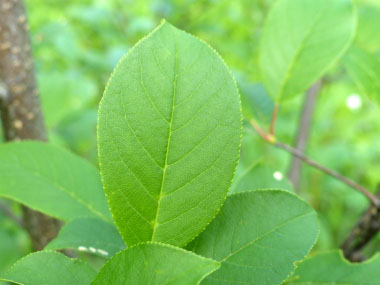
Autumn Olive Identification Leaves Bark Habitat Elaeagnus Umbellata
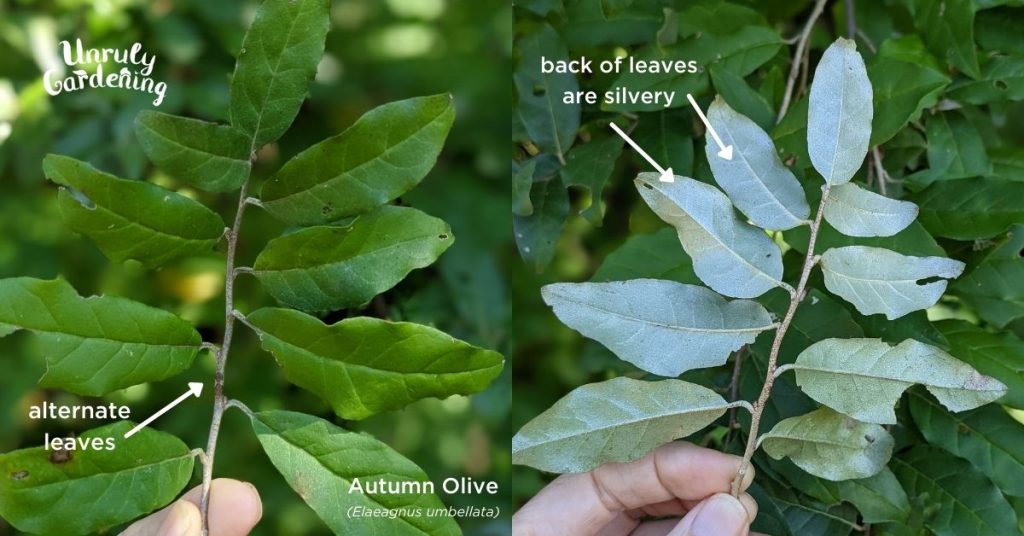
Foraging Identifying Autumn Olive Berries Lookalikes Unruly Gardening
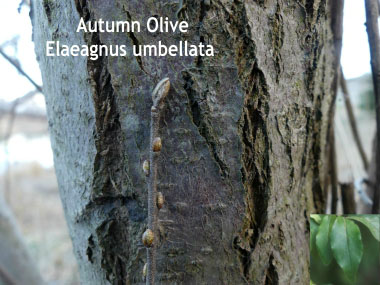
Autumn Olive Identification Leaves Bark Habitat Elaeagnus Umbellata
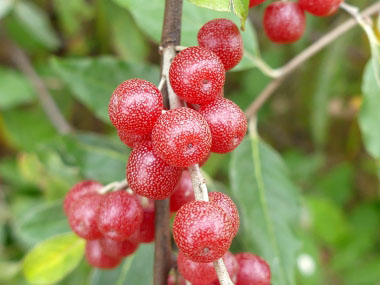
Autumn Olive Identification Leaves Bark Habitat Elaeagnus Umbellata
